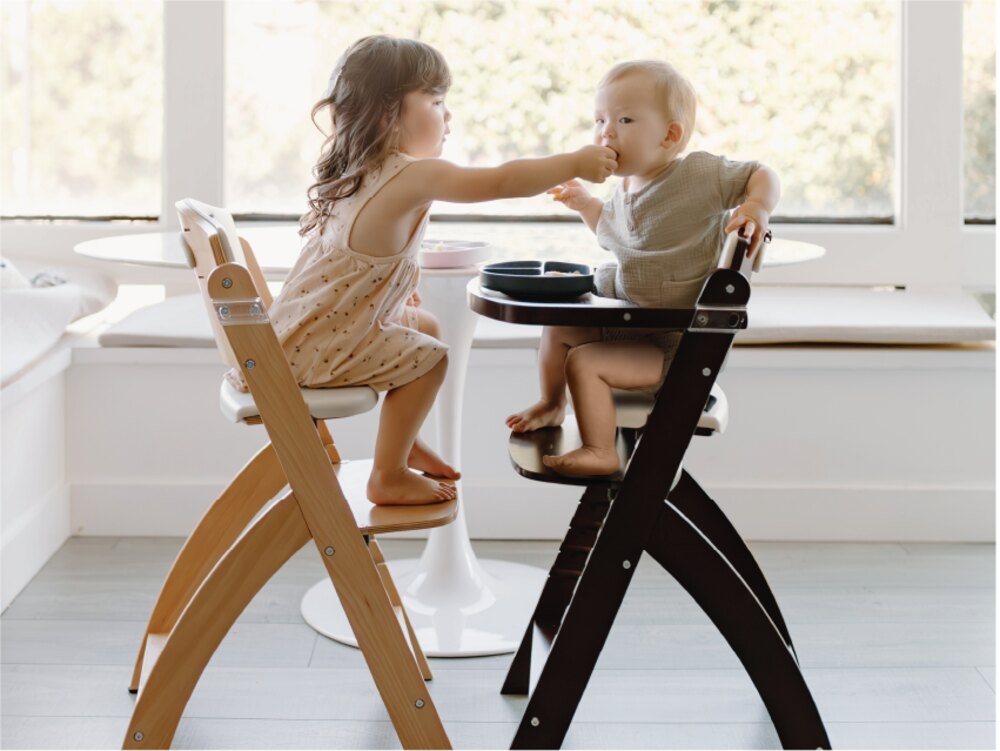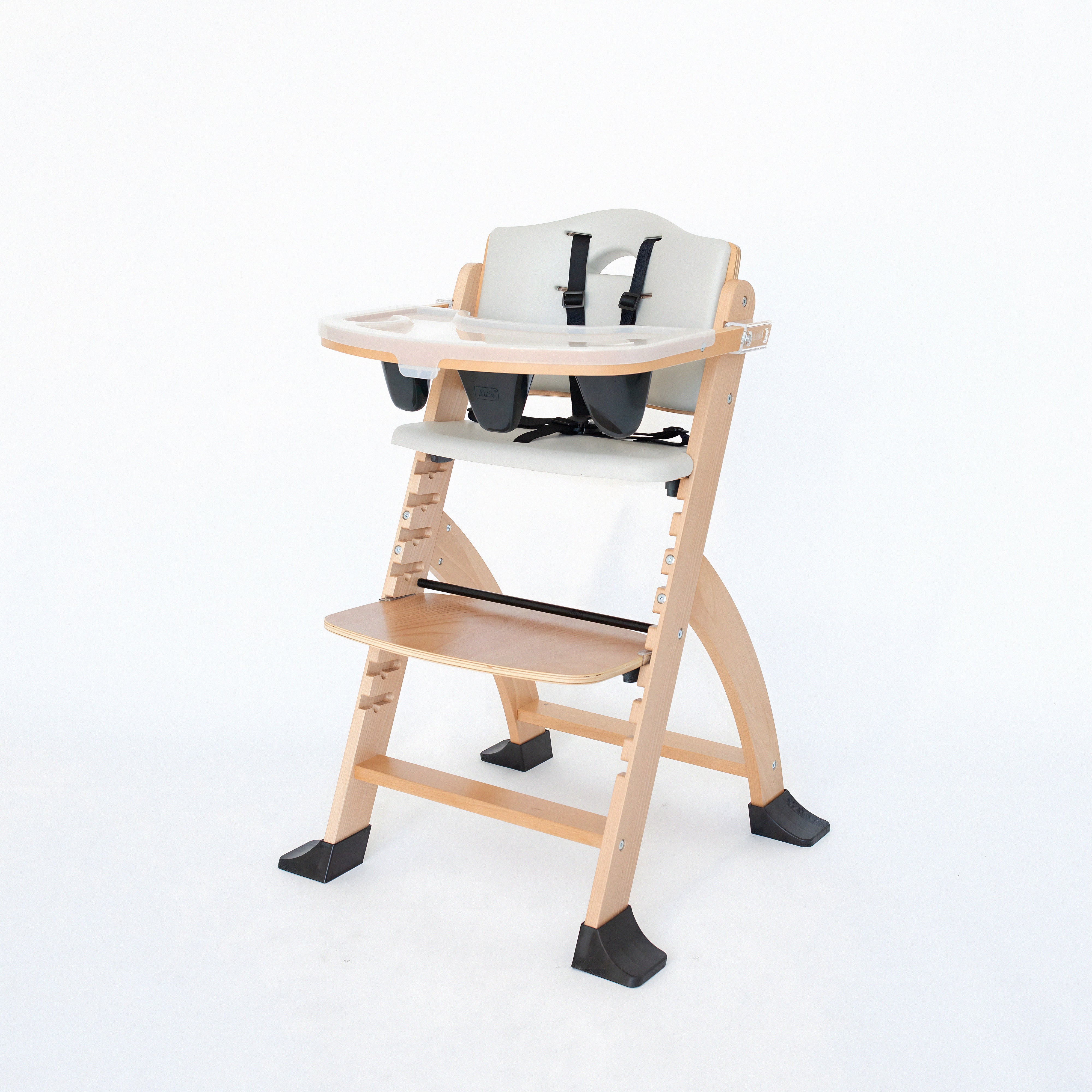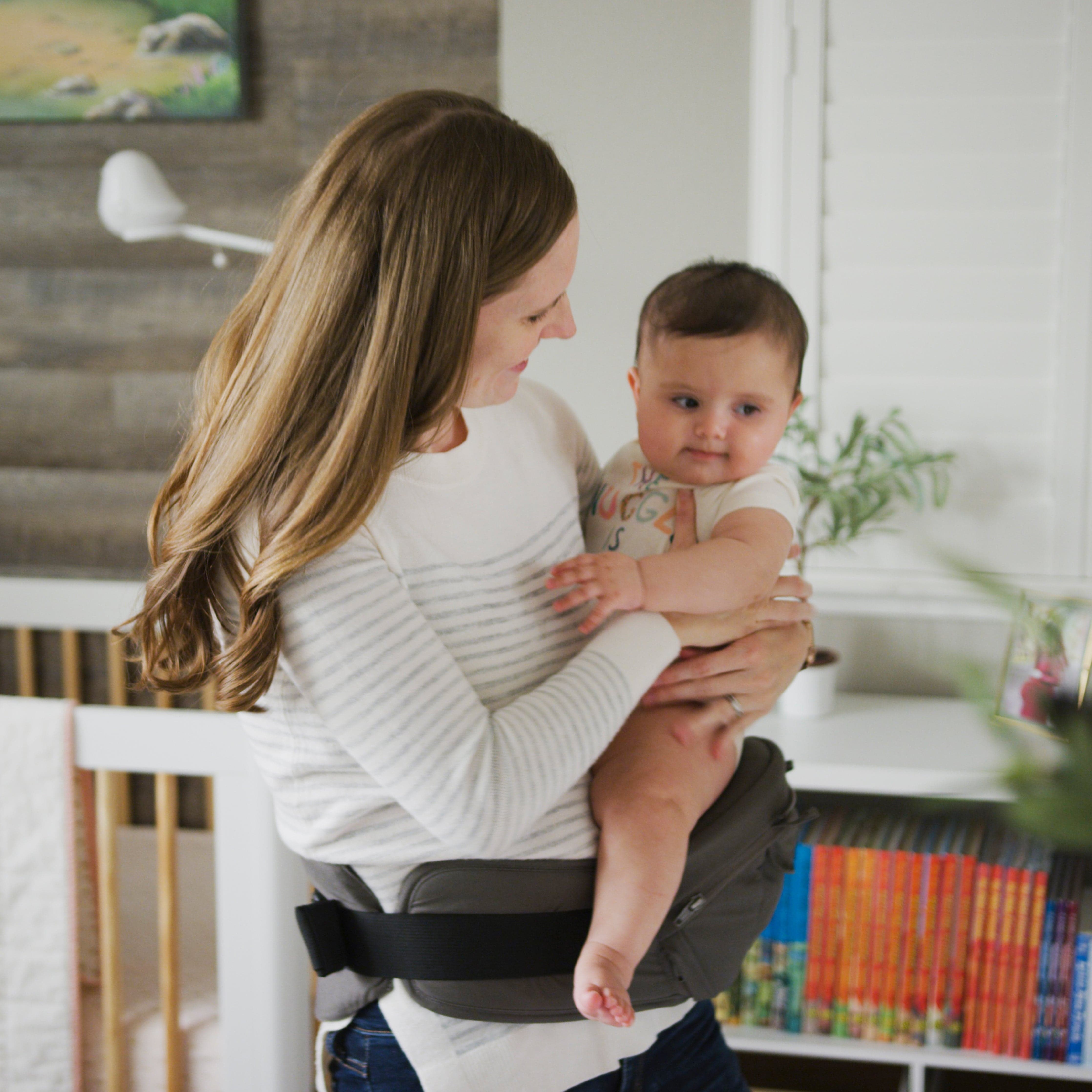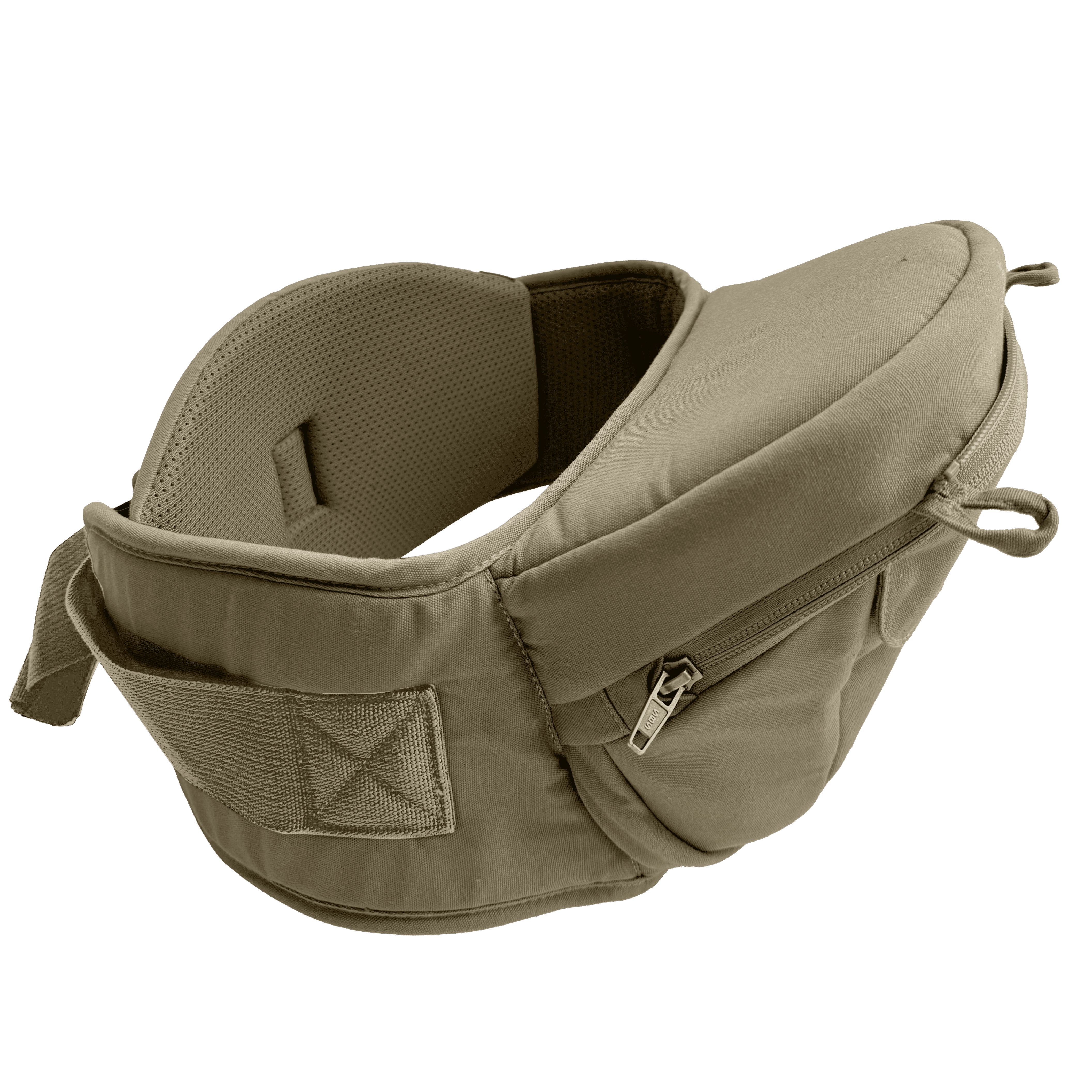Wood vs. Plastic High Chairs: A Sustainability Comparison

- Whilst plastic chairs are often more lightweight and portable, their shorter lifespan and non-recyclable components may raise environmental concerns.
- Wooden high chairs are generally a more eco-friendly option compared to plastic high chairs because wood is a renewable resource.
- The sustainability of wood high chairs depends on responsible sourcing. Our wooden high chairs at Abiie® are made of recyclable and biodegradable beechwood from sustainable forests in Europe.
In the market for a new high chair? Then you’re likely well-acquainted with the dilemma: choosing between wood and plastic high chairs.
Aisles and websites are lined with colorful plastic models boasting low prices and lightweight construction. On the other side, you have wooden high chairs, with their aesthetic appeal, easy cleaning, and durability. However, for eco-conscious families, the plastic vs. wood debate isn’t just about aesthetics and longevity – it’s about sustainability. Which high chair is the better option? Let’s find out.
Responsible Sourcing Matters
When evaluating the eco-friendliness of plastic and wooden high chairs, it’s important to look at the entire product lifestyle – even raw material sourcing.
Plastic
Whilst some plastics can be made from renewable sources like plants, most plastics – over 99%, to be exact – are derived from fossil fuels. This means that they contribute to greenhouse gas emissions and climate change.
Plastics also do not decompose easily, instead remaining in the environment for long periods, littering landscapes and accumulating in our oceans.
Wood
Wood is a natural, renewable resource, making a wooden high chair a more eco-friendly option than plastic. However, its sustainability depends on responsible sourcing and forest management. Deforestation can become a problem if it’s not sourced responsibly.
We embrace eco-friendly living at Abiie®. Our Beyond Junior® High Chair is consciously crafted from renewable European FSC-certified and PEFC-certified beechwood from sustainable forests, making it more planet-friendly.
Wood vs. Plastic High Chairs: Longevity

A high chair’s longevity is also integral to sustainability. Prioritise durable high chairs with a longer lifespan so as not to contribute to waste.
Many plastic high chairs are prone to cracking and breaking over time. The natural solution for parents and caregivers is to toss these chairs in the bin and buy another plastic high chair. Whilst cost-effective and convenient, frequent replacements can lead to extra landfill waste, as plastics are challenging to recycle.
Wooden high chairs are better than plastic not only because they’re biodegradable but also because they’re more durable. They can last many years, with many passing these chairs down through generations. Paired with our patented EZ-seat design that allows for quick adjustment of the seat, our Beyond Junior® also offers versatility for use from infancy to adulthood.
Which Material is Easier to Maintain?
Those who prioritise sustainability should also choose a high chair that’s easy to clean and maintain. This helps extend your chair’s lifespan and reduce the need for replacement.
Plastic high chairs are generally easy to clean, wiping them clean with a damp sponge or cloth. They also offer trays that can be removed to simplify cleaning. However, some chairs may have tiny pores where food particles can lodge and cause staining.
Parents swear by our easy-clean high chair. It’s designed for easy disassembly and provides multiple access points for easy cleaning. The belt, seat, harness, and more are all removable. Wipe your high chair cushion, along with the rest of the chair. Our tray cover can even be detached and popped into the dishwasher for quick and easy cleaning.
Safety and Hygiene
Plastics are made from chemical compounds and often contain additional additives to enhance their properties, like phthalates. This can be a concern because they leach out of plastic, posing safety concerns.
Our beechwood is sterilised with pressure-assisted anti-microbial heat sterilisation at 120°C. This ensures safety. Our wooden high chairs are also free from harmful substances such as BPA, phthalates, and PVC – just like our other baby products.
The Pros and Cons of Plastic and Wooden High Chairs
Pros of Plastic High Chairs
|
Pros of Wooden High Chairs
|
Cons of Plastic High Chairs
|
Cons of Wooden High Chairs
|
Wood vs. Plastic High Chairs: Which Is More Sustainable?
The verdict: Wood high chairs are more sustainable, but only if the wood has been consciously sourced and proper forest management is considered. Not only is wood a renewable and biodegradable resource, but wooden high chairs last longer, preventing added waste and pollution.
Sustainability Built Into Every High Chair
At Abiie®, sustainability isn’t just a talking point; it’s built into everything we make. The Beyond Junior High Chair® showcases this commitment, as we responsibly source FSC and PEFC-certified beechwood with a thoughtful design that adapts as your child grows. Every choice we make is designed to last for years to come. Interested in learning more? Explore our line of top baby products today! Discover baby gear designed for both your little one and the planet.
 USA
USA
 Canada
Canada
 Japan
Japan
 Malaysia
Malaysia
 Singapore
Singapore
 Taiwan
Taiwan





